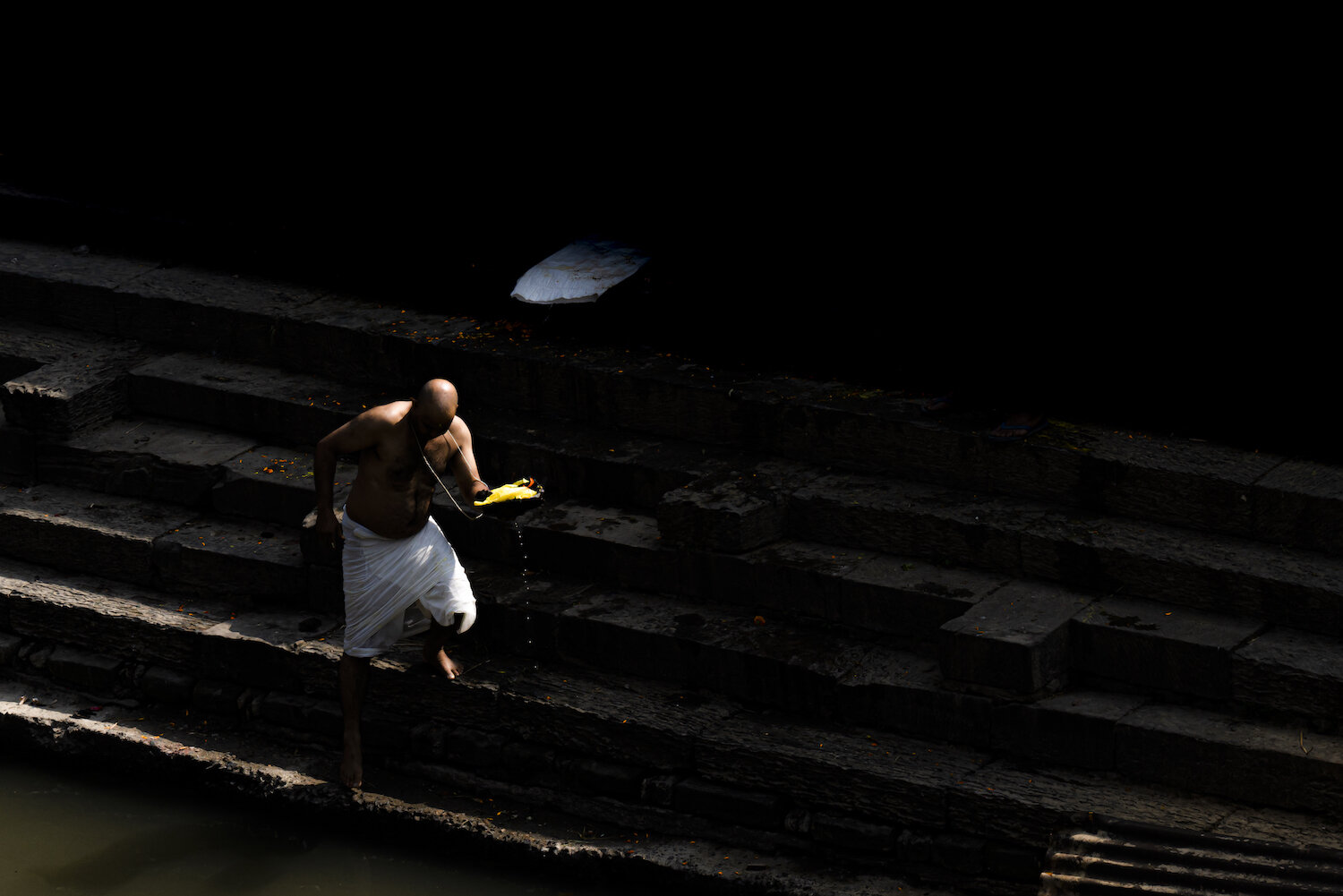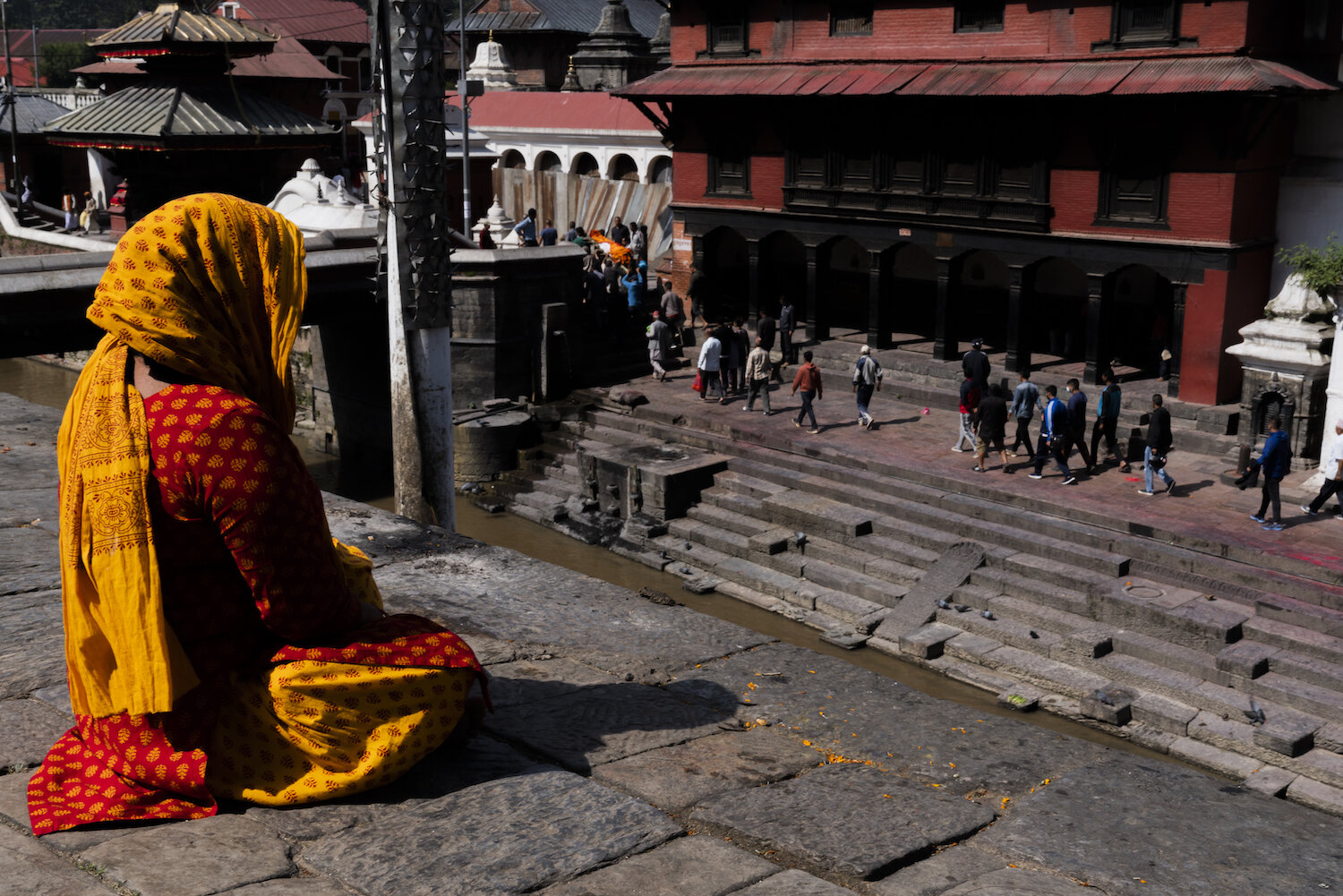Cremation
by Bruno Lavi
“Nothing defines our very existence more than life and death.”
- Photographer Stephen Dupont (b. 1967)
In the past year, I have traveled in two special and sacred places for the Hindu religion: Varanasi on the banks of the Ganges River in India, and Pashupatinath on the Bagmati River in neighboring Nepal.
In those places, the cremations of dead bodies are practiced nonstop as a part of the cycle of life ritual.
Relatives bring their deceased loved ones to be cremated in these places, prepare the cremation ritual by performing prayers and cortege.
The dead bodies are cremated, their ashes were thrown into the river, in the belief that their spirits will enter the heavens of the Hindu gods.
On the banks of the rivers, children and adults look all daylong for godsends in the figure of remains from the rituals – decorations, coins or even a jewel.
Everything runs smoothly, the people seem to float around the dead body, all in gentle touches. There is perfect silence in the air, something peaceful. Slowly the deceased fades from this world until the eternal physical disappearance...
For Hindus, the ritual of incineration is considered to be a main part of the pathway to enlightenment.
Incineration has been part of the cycle of life rituals among different cultures since prehistoric times, yet with the spread of Christianity, incineration began to diminish in importance.
In physical terms, incineration is the process by which the body of a deceased person is subjected to a combustion process, with temperatures up to 1,093 degrees Celsius.
Those who choose to incinerate their loved ones, do so for a variety of reasons, including cultural traditions, the convenience of keeping the urn of their family member in the house, or turning the ashes into a wearable adornment.
Hinduism is unique among the world's great religions because it allows open cremation, calling it the “Last Rite,” (calledantim-sanskar) or “Last Sacrifice,” (orantiesthi) and being part of the 16-rituals of life.
Hinduism believes that incineration is not only the means by which the body can end this life, but also allows the soul to enter into its new life and reincarnate.
Cremation, institutionalized in Asia through Buddhism and Hinduism, is one of the most common techniques used by people in this region. Embalming is less commonly used, but can sometimes precede a cremation. In India and Nepal, the cremation takes place in the open air.
Although for me, as a Jew, cremation has a problematic connotation to the Holocaust during World War II, when the bodies of millions of Jews were burned in crematories at the death camps, I couldn’t help but be impressed by the poetic, quiet and even beauty of Varanasi and Pashupatinath cremation rituals.
I will definitely come back to these wonderful and spiritual places where the death rituals has literally dimensions of poetry and beauty.
Bagmati River in Nepal
Ganges River in India
- What is your camera of choice for street photography? Sony 7r IV
- What is your favorite technique (lens choice ... fill-flash)? No flash, sony 24-70
- How do you manage color and B&W? Depends, some of my work works better in BW and other in color.
- What is your primary software for post- production? Lightroom
Born in Romania in 1965 - Lives in Rosh Haayn and works in Jerusalem, Israel
I fell in love with photography about four years ago, at the age of 50, and consider it as a great gift for me! Photography for me is actually a multi-layered journey of material and human environmental discovery.
As with every journey, I enter into known or unknown areas, sometimes alone sometimes accompanied but always with the dream of discovering something else in the realm of creativity.
Most of my work is about people and contact. In general, the humanistic ethos is at the center of my interest where the human been with his attitudes, attributes, activities or thoughts is always at the center.
The psychological, historical or geographical view of mankind inspires curiosity and interest in examining it in the purest way I would like it to be reflected to everyone.


















